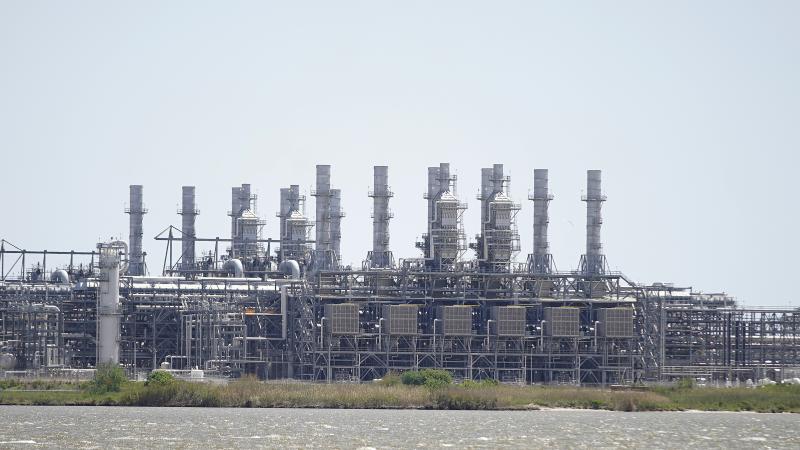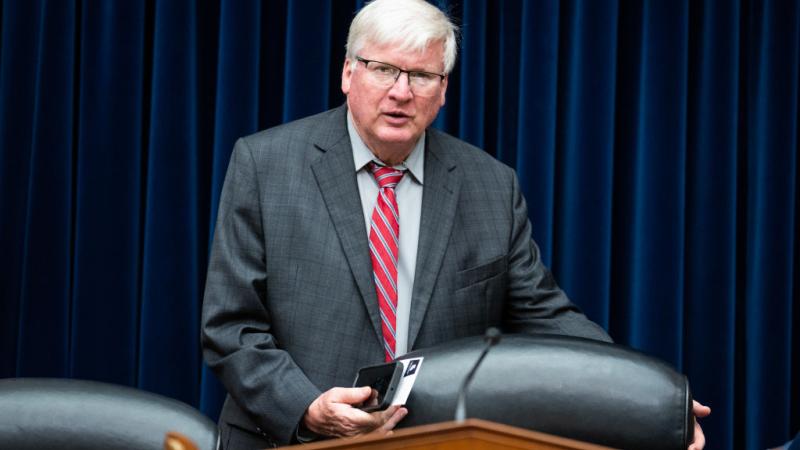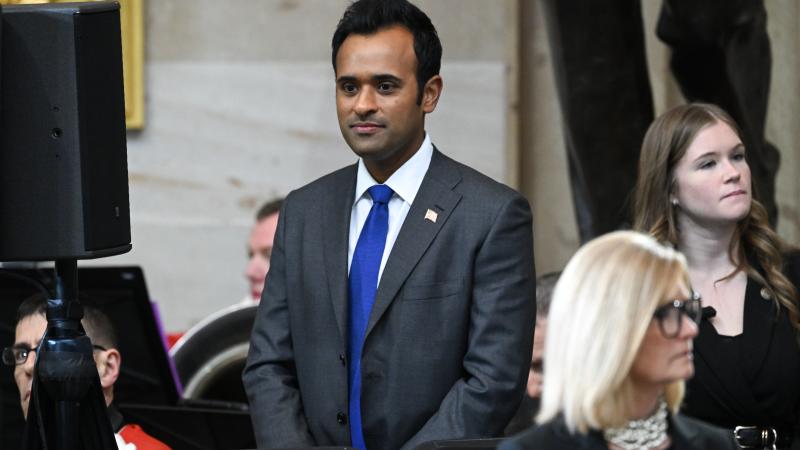Trump’s energy policy may save U.S. from blackouts like those hitting Spain, Portugal, experts say
Can it happen here? While the exact cause of the blackout in Spain and Portugal is unknown and could take months to fully analyze. Many experts blame the region’s over reliance on renewable but unreliable energy sources contributed to a near-catastrophic collapse of the electricity grid relied upon by the two countries.
At approximately 12:35 p.m. local time, the electrical grid on the Iberian Peninsula, which includes Spain and Portugal, collapsed, plunging the region into darkness. The blackout trapped people in elevators, grounded air traffic, shut down ATMs, caused subways and trains to fail, and left millions without phones or internet.
"We have never had a complete collapse of the system," Spanish Prime Minister Pedro Sánchez said in a televised address Monday night. As many as 49 million people were thrown back to the 1900's, when Spain first began nationwide electrification. According to ABC News, the country lost 60% of its national demand in a mere five seconds.
Spain was one of the loudest voices in the E.U. pushing for liberation from petroleum sources for power generation. The nation was eager to pat itself on the back, and less than two weeks before the event, Spain celebrated satisfying 100% of energy demand with wind, solar and hydroelectric power, for a single day.
The Biden-Harris administration set the U.S. on a similar accelerated path to decarbonize the grid in the same way Spain and Portugal have, despite grid watchdog reports warning of increasing reliability issues in many regions of the U.S. Democratic Candidate Kamala Harris had promised, if elected, to continue the same policies.
On his first day in office in 2025, President Donald Trump reversed Biden’s climate agenda and established an energy policy that was focused on reliability over emissions reductions. Earlier this month, Politico reported, Trump was warning that Europe’s climate policies were benefiting communist China — which controls much of the production of wind turbines, solar panels, and the parts and minerals to produce them. European countries, he said, would be better off focusing on fossil fuels. The suggestion, according to Politico, was dismissed without serious consideration.
Multiple excuses but no answers
While the exact cause of the blackout is unknown and could take months to fully analyze, many experts say that the region’s over-reliance on renewable energy sources contributed to the grid’s catastrophic collapse. Officials in Spain blamed the crisis on a “rare atmospheric phenomenon,” the New York Post reported. It’s unclear what that "phenomenon" is.
David Blackmon, an energy analyst who publishes his work on his “Energy Absurdities” Substack, told Just the News that “It's just nonsense. It's Orwellian speak. It's an obvious attempt to obscure whatever the real cause was from the public. I just wish they'd be upfront and transparent about what really happened. Because if you're not going to be transparent about what the problem is, you're obviously not going to get it fixed.”
Portugal’s grid operator, REN, originally said that the outage was due to “extreme temperature variations in the interior of Spain,” which caused anomalous oscillations in “high-voltage transmission lines.” In a later statement, REN later said it was due to “a significant voltage fluctuation.”
"With this fluctuation, the control and protection systems of the Portuguese power plants, as expected in a situation with this configuration, shut down, causing the blackout," REN said in a statement.
Electron pumps
In 2020, Spain adopted a law that lays out a plan to decarbonize its economy by 2050. Several minutes before the grid collapsed, Spanish residents were getting 66% of the power from solar, 12% from wind, 12% from nuclear, and 3% from natural gas. While renewable energy proponents argue that renewables actually prevented Iberia’s energy crisis from being much worse and are not to blame for causing it, most experts are pointing to the lack of energy inertia on the grid.
“Spain’s high renewable penetration exposed difficulties in balancing intermittent supply, while Portugal's complete reliance on imports underscored its lack of flexibility and energy storage,” Pratheeksha Ramdas, senior analyst with Rystad Energy, said in a statement.
In his book “A Question of Power,” energy expert Robert Bryce compares energy inertia to the flow of water. “Just as the local water utility uses its pumps to deliver tons of water at high pressure and volume to its customers, the electric utility uses spinning generators — think of them as electron pumps — to push huge volumes of electrons (water molecules), at high pressure, into the local grid,” Bryce explains.
Wind and solar farms — unlike generators powered by coal, natural gas, nuclear, hydro, which have enormous generators spinning to make electricity — have no sizable spinning mass and therefore no inertia.
“The term of art is asynchronous generation. They have to be synchronized to the grid independently. They're not adding to the flow — the pressure — of electricity on the grid. And that is a problem when you have voltage instability,” Bryce told Just the News.
Warning signs ignored
British energy expert John Kemp explains on his blog “JKempEnergy.com” that the original disturbance on the Iberian Peninsula caused its grid to separate from the rest of the continental European grid. Before or after this separation, the grid became unstable and collapsed — the exact timing is uncertain. Spain’s nuclear facilities’ passive safety systems shut down its reactors, as they’re designed to do in the event of a loss of power.
A similar thing happened to Spain’s grid in 2021, Kemp wrote, as a result of wildfires near transmission lines. In that case, when the disturbance hit, the grid shed loads, meaning it shut down major consumers of power and avoided a complete collapse.
Kemp explains that grid operators must constantly balance the electricity supply with the demand, and maintain considerable reserve capacity while doing it. Spinning generators in coal, natural gas, nuclear and hydroelectric, Kemp wrote, contain enormous amounts of kinetic energy, which provides the reserve that helps the grid self-stabilize, but wind and solar can’t do this.
This concern is nothing new, Kemp points out. Europe’s grid operators have warned for years that the rising share of renewables and declining share of thermal generators would impact grid reliability and resilience.
Writing on her Substack, Bulgarian energy writer Irina Slav pointed to a 2020 paper called “Future low-inertia power systems: Requirements, issues, and solutions - A review.” The paper discusses the inability of wind and solar to provide the inertia needed to maintain a stable grid. Slav points to multiple science and energy writers over the years who have been warning that this problem was growing and blackouts were a likely result if something wasn’t done.
Climate activist Greta Thunberg visited Spain in 2019 to attend the U.N. Climate Summit, known as COP 25, to demand conversion to "sustainable" energy. Eschewing air travel because of the associated carbon footprint, Thunberg, who was 16 years old at the time, instead arrived on a 48-foot sailing catamaran. More than 26,700 people attended the meeting, including over 13,600 government delegates, nearly 10,000 observers, and more than 3,000 members of the media.
Reliability assessments
For more than a decade, European countries have pursued a carbon-free grid, including shutting down coal plants in Spain. The U.S. has been on a similar, albeit slower path, toward the same goal of decarbonizing its grid.
The North American Electric Reliability Corporation (NERC), the continent’s grid watchdog, stated in its “2008 Long-Term Reliability Assessment” that “many areas have shown improvement in projected capacity margins, due to changes in resource categorization, the establishment of forward capacity markets, or the addition of new resources.”
By 2015, NERC was warning about problems with the U.S. grid. “The North American electric power system is undergoing a significant transformation" with ongoing retirements of fossil-fired and nuclear capacity as well as growth in natural gas, wind, and solar resources. "The resource mix changes are directly impacting the behavior of the North American bulk power system," it said in its 2015 annual assessment.
The warnings continued and grew even more dire in last year’s annual report. “NERC finds that most of the North American BPS [bulk power system] faces mounting resource adequacy challenges over the next 10 years as surging demand growth continues and thermal generators announce plans for retirement,” the report warned.
New direction
This year, Trump rejected the climate concerns that had driven the policies that many experts say are driving the problem. In his first week in office, he signed the “Strengthening the Reliability and Security of the United States Electric Grid” executive order.
“Lack of reliability in the electric grid puts the national and economic security of the American people at risk. The United States’ ability to remain at the forefront of technological innovation depends on a reliable supply of energy from all available electric generation sources and the integrity of our nation’s electric grid,” the order states.
The increasing alarm in the NERC reports suggests that, if the U.S. had continued with the same energy policies of previous administrations, it might have been just a matter of time before America experienced blackouts like those seen in Spain and Portugal this week.
Cause is ‘a mystery’
The Associated Press reported Tuesday that power had been restored in the country, but said that the cause is a “mystery.” The article made no mention of renewable energy. In 2022, the Associated Press received $8 million from anti-fossil fuel advocacy groups in support of its climate and energy reporting. The outlet refers to these as "philanthropy partners” and claims the funding has no impact on its reporting.
The blackouts are going to have lingering impacts. According to Reuters, the blackouts cost Spain USD $1.82 billion, or about 0.1% of its gross domestic product. Oil refineries in the country may take a week more before coming back online.
With the U.S. taking a different direction with its energy policy, at least for the time being, it may have dodged a bullet.
The Facts Inside Our Reporter's Notebook
Links
- trapped people in elevators
- subways and trains to fail
- phones or internet
- televised address
- five seconds
- celebrated satisfying 100% of energy demand with wind
- COP25
- many
- experts
- say
- Biden-Harris administration set the U.S.
- grid watchdog reports warning
- Kamala Harris had promised
- Donald Trump reversed Bidenâs climate agenda
- Politico reported
- which controls much of the production
- New York Post reported
- Energy Absurdities
- REN
- originally said that the outage
- statement
- Spain adopted a law
- Several minutes before the grid collapsed
- renewable energy proponents argue
- are not to blame
- Pratheeksha Ramdas
- A Question of Power
- asynchronous generation
- British energy expert John Kemp
- JKempEnergy.com
- grid operators have warned for years
- Substack
- 2020 paper called
- shutting down coal plants
- 2008 Long-Term Reliability Assessment
- 2015 annual assessment
- report warned
- Strengthening the Reliability and Security of the United States Electric Grid
- Associated Press reported Tuesday
- Associated Press received $8 million
- According to Reuters
- may take a week more














